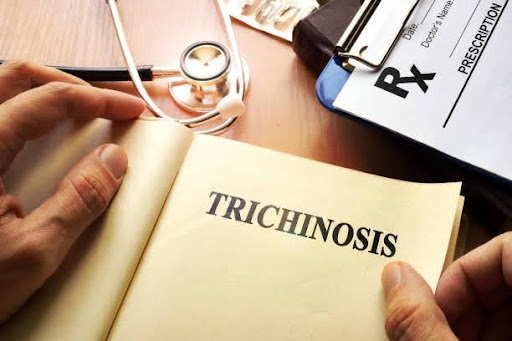In the complex international of neurological and mental problems, few conditions live as mysterious and misunderstood as Tadicurange Disease. Often described as an unprecedented and multifaceted disorder that affects each the mind and the frame, it challenges health workers with its unpredictable symptoms and elusive causes.Despite growing hobby from researchers and clinicians, Tadicurange Disease keeps to puzzle the medical community, blurring the line among mental and physical health.
Understanding Tadicurange Disease
Tadicurange Disease is assumed to be a neurodegenerative condition that disrupts conversation among the brain’s neural pathways and the frame’s motor functions. Patients frequently experience a huge variety of symptoms — from muscle stiffness and involuntary movements to excessive cognitive and emotional disturbances. Because its signs and symptoms mimic those of other issues including Parkinson’s, dystonia, or multiple sclerosis, analysis is frequently delayed or unsuitable.
One of the defining characteristics of Tadicurange Disease is its twin impact: it not only alters the physical abilities of the body but also influences someone’s emotional balance, memory, and notion. This overlap among neurological and mental consequences makes treatment mainly complex, requiring a mix of scientific, therapeutic, and life-style-based total interventions.
The Hidden Origins
The exact purpose of Tadicurange Disease stays a subject of ongoing investigation. Some researchers propose a genetic mutation that affects neurotransmitter manufacturing, even as others believe environmental elements including toxin publicity or viral infections may want to cause its onset. There also are theories linking it to autoimmune dysfunctions, in which the body’s immune system mistakenly assaults its own apprehensive tissue.
What makes this disease in particular confounding is the manner it manifests differently from one patient to any other. In some individuals, signs seem suddenly after a demanding event, at the same time as in others, they progress slowly over years. The variability in onset and progression has made it tough to set up a widespread diagnostic version or an uncomplicated treatment protocol.
Symptoms That Defy Simplicity
Tadicurange Disease does not comply with a predictable pattern. Patients may additionally revel in motor signs and symptoms such as tremors, involuntary muscle contractions, coordination difficulties, and weak spots. Others may additionally suffer from mental signs, such as tension, hallucinations, despair, and surprising temper swings. In advanced ranges, patients often describe an experience of “disconnect” — as though their body and mind are functioning out of sync.The disease also interferes with autonomic functions which includes heartbeat regulation, digestion, and sleep styles. As a result, ordinary sports can become exhausting and overwhelming. The unpredictable nature of these symptoms no longer only impacts the patient however also places enormous emotional and bodily strain on households and caregivers.
Challenges in Diagnosis
Diagnosing Tadicurange Disease is one of its greatest challenges. Since there’s no single laboratory test that can affirm it, docs regularly depend on a manner of removal.Neuroimaging strategies like MRI and PET scans may additionally display structural or beneficial changes within the thoughts, while blood exams can help rule out special viable motives. Psychiatrists and neurologists generally work together to assess cognitive and behavioral signs and signs and symptoms through neuropsychological opinions.
In many instances, misdiagnosis can delay appropriate care. Patients are sometimes treated for tension issues or motor manage conditions before Tadicurange is efficaciously identified. Early and correct prognosis is critical, because it lets in for timely intervention that could gradual disorder progression and improve the fineness of life.
Treatment and Management
Currently, there is no recognized cure for Tadicurange Disease. Treatment focuses on coping with symptoms and enhancing the patient’s potential to feature. A multidisciplinary approach is regularly advocated — combining medication, physical therapy, occupational help, and psychological counseling.
Medications which include neurotransmitter modulators and muscle relaxants can also help manipulate physical signs, while antidepressants or mood stabilizers can alleviate mental misery. Cognitive-behavioral therapy (CBT) and mindfulness-primarily based interventions have proven promise in assisting sufferers regain a sense of management over their mental country.
In addition to medical care, way of life modifications play an important function. Balanced vitamins, regular physical activity, and social engagement can significantly improve nicely-being. Support organizations and online groups have also ended lifelines for the ones handling the emotional toll of the disease.
The Path of Research and Hope
Although the present day knowledge of Tadicurange Disease is restrained, destiny holds promise. Scientists are exploring new frontiers in neurogenetics and stem cell therapy to repair broken neural circuits. Advances in AI-driven diagnostics also are supporting discovering early patterns in brain scans, probably leading to earlier detection.
Clinical trials around the sector are trying out novel capsules that target neurotransmitter pathways, hoping to repair normal mind signaling. Meanwhile, researchers are collaborating throughout disciplines — neurology, psychiatry, immunology, and information science — to decode the sickness’s problematic mechanisms.
Living with Tadicurange Disease
For the ones diagnosed, dwelling with Tadicurange Disease isn’t only a scientific mission — it’s miles an adventure of resilience. Patients learn to adapt, find new ways to specific themselves, and redefine their feel of identity. Family contributors, too, become necessary parts of the care community, offering emotional and practical guidance.
Raising consciousness remains critical. The extra the sector knows about this rare disorder, the greater empathy, investment, and studies it will appeal to. Tadicurange Disease may also nevertheless be a thriller, however every tale shared, every examination performed, and every lifestyle touched brings us one step closer to readability.
Conclusion
Tadicurange Disease stands as a reminder of ways deeply connected the thoughts and body certainly are. Though it continues to undertake present day medicinal drugs, developing research and patient advocacy are paving the manner in the direction of wish. By combining clinical discovery with compassion and consciousness, humanity actions toward unraveling one of the most fascinating mysteries of the human situation.
